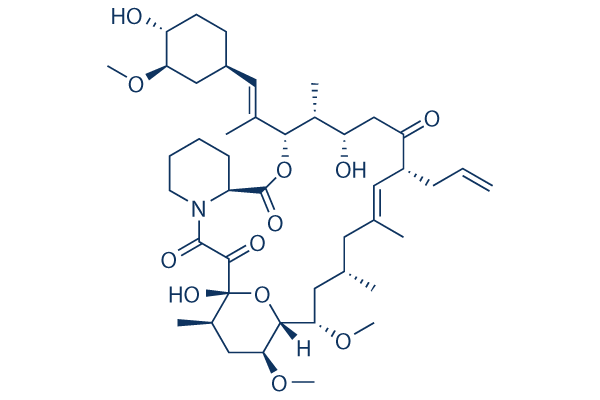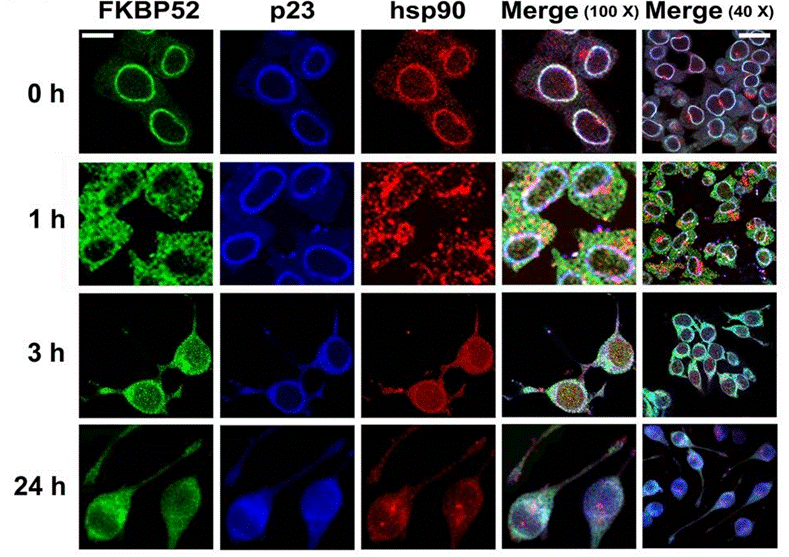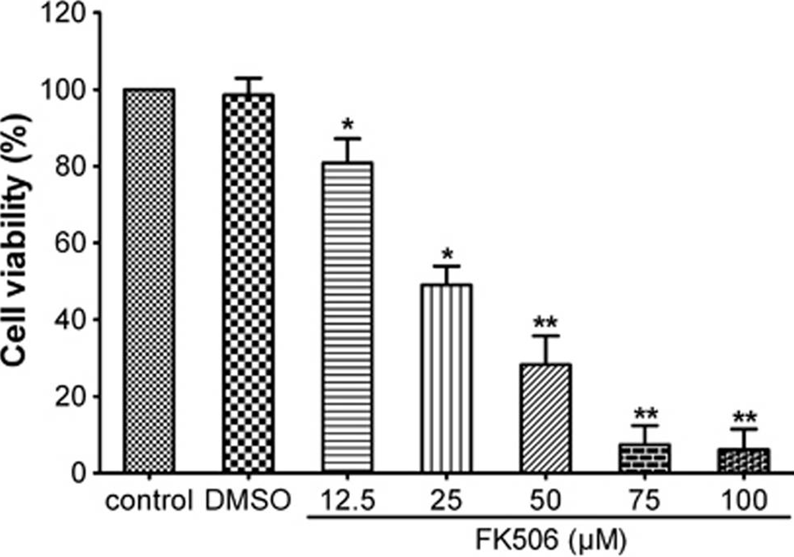
- Bioactive Compounds
- By Signaling Pathways
- PI3K/Akt/mTOR
- Epigenetics
- Methylation
- Immunology & Inflammation
- Protein Tyrosine Kinase
- Angiogenesis
- Apoptosis
- Autophagy
- ER stress & UPR
- JAK/STAT
- MAPK
- Cytoskeletal Signaling
- Cell Cycle
- TGF-beta/Smad
- DNA Damage/DNA Repair
- Compound Libraries
- Popular Compound Libraries
- Customize Library
- Clinical and FDA-approved Related
- Bioactive Compound Libraries
- Inhibitor Related
- Natural Product Related
- Metabolism Related
- Cell Death Related
- By Signaling Pathway
- By Disease
- Anti-infection and Antiviral Related
- Neuronal and Immunology Related
- Fragment and Covalent Related
- FDA-approved Drug Library
- FDA-approved & Passed Phase I Drug Library
- Preclinical/Clinical Compound Library
- Bioactive Compound Library-I
- Bioactive Compound Library-Ⅱ
- Kinase Inhibitor Library
- Express-Pick Library
- Natural Product Library
- Human Endogenous Metabolite Compound Library
- Alkaloid Compound LibraryNew
- Angiogenesis Related compound Library
- Anti-Aging Compound Library
- Anti-alzheimer Disease Compound Library
- Antibiotics compound Library
- Anti-cancer Compound Library
- Anti-cancer Compound Library-Ⅱ
- Anti-cancer Metabolism Compound Library
- Anti-Cardiovascular Disease Compound Library
- Anti-diabetic Compound Library
- Anti-infection Compound Library
- Antioxidant Compound Library
- Anti-parasitic Compound Library
- Antiviral Compound Library
- Apoptosis Compound Library
- Autophagy Compound Library
- Calcium Channel Blocker LibraryNew
- Cambridge Cancer Compound Library
- Carbohydrate Metabolism Compound LibraryNew
- Cell Cycle compound library
- CNS-Penetrant Compound Library
- Covalent Inhibitor Library
- Cytokine Inhibitor LibraryNew
- Cytoskeletal Signaling Pathway Compound Library
- DNA Damage/DNA Repair compound Library
- Drug-like Compound Library
- Endoplasmic Reticulum Stress Compound Library
- Epigenetics Compound Library
- Exosome Secretion Related Compound LibraryNew
- FDA-approved Anticancer Drug LibraryNew
- Ferroptosis Compound Library
- Flavonoid Compound Library
- Fragment Library
- Glutamine Metabolism Compound Library
- Glycolysis Compound Library
- GPCR Compound Library
- Gut Microbial Metabolite Library
- HIF-1 Signaling Pathway Compound Library
- Highly Selective Inhibitor Library
- Histone modification compound library
- HTS Library for Drug Discovery
- Human Hormone Related Compound LibraryNew
- Human Transcription Factor Compound LibraryNew
- Immunology/Inflammation Compound Library
- Inhibitor Library
- Ion Channel Ligand Library
- JAK/STAT compound library
- Lipid Metabolism Compound LibraryNew
- Macrocyclic Compound Library
- MAPK Inhibitor Library
- Medicine Food Homology Compound Library
- Metabolism Compound Library
- Methylation Compound Library
- Mouse Metabolite Compound LibraryNew
- Natural Organic Compound Library
- Neuronal Signaling Compound Library
- NF-κB Signaling Compound Library
- Nucleoside Analogue Library
- Obesity Compound Library
- Oxidative Stress Compound LibraryNew
- Plant Extract Library
- Phenotypic Screening Library
- PI3K/Akt Inhibitor Library
- Protease Inhibitor Library
- Protein-protein Interaction Inhibitor Library
- Pyroptosis Compound Library
- Small Molecule Immuno-Oncology Compound Library
- Mitochondria-Targeted Compound LibraryNew
- Stem Cell Differentiation Compound LibraryNew
- Stem Cell Signaling Compound Library
- Natural Phenol Compound LibraryNew
- Natural Terpenoid Compound LibraryNew
- TGF-beta/Smad compound library
- Traditional Chinese Medicine Library
- Tyrosine Kinase Inhibitor Library
- Ubiquitination Compound Library
-
Cherry Picking
You can personalize your library with chemicals from within Selleck's inventory. Build the right library for your research endeavors by choosing from compounds in all of our available libraries.
Please contact us at info@selleckchem.com to customize your library.
You could select:
- Antibodies
- Bioreagents
- qPCR
- 2x SYBR Green qPCR Master Mix
- 2x SYBR Green qPCR Master Mix(Low ROX)
- 2x SYBR Green qPCR Master Mix(High ROX)
- Protein Assay
- Protein A/G Magnetic Beads for IP
- Anti-Flag magnetic beads
- Anti-Flag Affinity Gel
- Anti-Myc magnetic beads
- Anti-HA magnetic beads
- Poly DYKDDDDK Tag Peptide lyophilized powder
- Protease Inhibitor Cocktail
- Protease Inhibitor Cocktail (EDTA-Free, 100X in DMSO)
- Phosphatase Inhibitor Cocktail (2 Tubes, 100X)
- Cell Biology
- Cell Counting Kit-8 (CCK-8)
- Animal Experiment
- Mouse Direct PCR Kit (For Genotyping)
- New Products
- Contact Us
research use only
Tacrolimus (FK506) FKBP inhibitor
Tacrolimus (FK506) is a 23-membered macrolide lactone, it reduces peptidyl-prolyl isomerase activity in T cells by binding to the immunophilin FKBP12 (FK506 binding protein) creating a new complex. Tacrolimus also inhibits the phosphatase activity of calcineurin. Tacrolimus induces vascular endothelial autophagy.

Chemical Structure
Molecular Weight: 804.02
Purity & Quality Control
Batch:
Purity:
99.97%
99.97
Related Products
| Related Targets | FKBP1 FKBP12 | Click to Expand |
|---|---|---|
| Related Products | Shield-1 AP20187 | Click to Expand |
| Related Compound Libraries | Kinase Inhibitor Library PI3K/Akt Inhibitor Library Apoptosis Compound Library Cell Cycle compound library NF-κB Signaling Compound Library | Click to Expand |
Cell Culture and Working Concentration
| Cell Lines | Assay Type | Concentration | Incubation Time | Formulation | Activity Description | PMID |
|---|---|---|---|---|---|---|
| human U251 cells | Function assay | Inhibition of SAP130 in VEGF-stimulated human U251 cells by PLAP reporter gene assay, IC50=13.8 nM | 17643112 | |||
| human WiDr cells | Growth inhibition assay | Inhibition of SAP130 mediated cell growth in human WiDr cells, IC50=10.9 nM | 17643112 | |||
| human T-cell | Proliferation assay | In vitro inhibitory activity against human T-cell proliferation, IC50=0.5 nM | 7537331 | |||
| rat RBL2H3 cells | Function assay | 15 mins | Antiinflammatory activity in rat RBL2H3 cells assessed as inhibition of DNP-BSA-induced TNF-alpha production preincubated for 15 mins prior DNP-BSA challenge measured after 30 mins by ELISA, IC50=0.25 nM | 22410084 | ||
| rat RBL2H3 cells | Function assay | 16 h | Inhibition of TNF-alpha production in rat RBL2H3 cells after 16 hrs by ELISA, IC50=0.25 nM | 23791076 | ||
| PBMCs | Function assay | Inhibitory activity against IFN-gamma production (Anti-CD3 monoclonal antibody stimulated and cultured CD4 positive cells purified from human peripheral blood mononuclear cell), IC50 = 0.00006 μM. | 15369399 | |||
| PBMCs | Function assay | Inhibitory activity against IL-5 production (Anti-CD3 monoclonal antibody stimulated and cultured CD4 positive cells purified from human peripheral blood mononuclear cell), IC50 = 0.00006 μM. | 15369399 | |||
| T-cells | Function assay | The compound was tested for its inhibitory activity against T-cell proliferation using murine splenic T-cells, IC50 = 0.0002 μM. | 10450987 | |||
| RBL-2H3 | Function assay | Inhibition of DNP7-BSA antigen-induced TNFalpha release in rat RBL-2H3 cells, IC50 = 0.00025 μM. | 16901696 | |||
| Jurkat T | Immunosuppressive assay | 15 to 30 mins | Immunosuppressive activity in PMA/ionomycin stimulated human Jurkat T cells assessed as suppression of IL2 production pretreated for 15 to 30 mins followed by PMA/ionomycin addition measured after 18 to 20 hrs by ELISA, IC50 = 0.36 μM. | 28412204 | ||
| HEK293 | Function assay | TP_TRANSPORTER: inhibition of Phalloidin uptake (Phalloidin: 1 uM) in OATP-C-expressing HEK293 cells, IC50 = 3.7 μM. | 14530907 | |||
| Jurkat T | Antiinflammatory assay | 20 mins | Anti-inflammatory activity in PMA/ionomycin stimulated human Jurkat T cells assessed as reduction in IL-2 secretion preincubated for 20 mins followed by PMA/ionomycin stimulation measured after 12 hrs by ELISA, IC50 = 5.8 μM. | 28509552 | ||
| Click to View More Cell Line Experimental Data | ||||||
Mechanism of Action
| Targets |
|
|---|
In vitro |
||||
| In vitro | Tacrolimus (FK506) and cyclosporin A block translocation of the cytoplasmic component without affecting synthesis of the nuclear subunit in T lymphocytes. [1] It prevents T-cell proliferation by inhibiting a Ca(2+)-dependent event required for induction of interleukin-2 transcription. [2] This compound binds to distinct families of intracellular proteins (immunophilins) termed cyclophilins and FK 506-binding proteins (FKBPs). It specifically inhibits cellular calcineurin at drug concentrations that inhibit interleukin 2 production in activated T cells. [3] Tacrolimus and CsA exert nearly identical biological effects in cells by inhibiting the same subset of early calcium-associated events involved in lymphokine expression, apoptosis, and degranulation. It binds to a family of intracellular receptors termed the FK-506 binding proteins (FKBPs). [4] |
|||
|---|---|---|---|---|
| Cell Research | Cell lines | Jurkat cells | ||
| Concentrations | 10 nM | |||
| Incubation Time | 1 h | |||
| Method | After cells were cultured in the presence of 10 nM Tacrolimus (FK506) for 1 hr and washed, phosphatase activity was measured in lysates. |
|||
| Experimental Result Images | Methods | Biomarkers | Images | PMID |
| Western blot | GluA1 / pGluA1(S845) / GluA2 / GluA3 / Calcineurin p-JNK / JNK / p-ERK / ERK / Cytochrome c / cleaved caspase-3 p-S6K(S371) / S6K / p-Erα(S167) / Erα |

|
26455952 | |
| Immunofluorescence | FKBP52 / p23 / hsp90 FKBP51 Tom20 / JC-1 / ROS / NF-κB |

|
20796173 | |
| Growth inhibition assay | Cell viability |

|
23470533 | |
In Vivo |
||
| In vivo | Tacrolimus (FK506) results in increase in the paw and tail withdrawal threshold as revealed by behavioral pain assessment in rats against hyperalgesic and allodynic stimuli. It also leads to a decrease in the serum nitrate and thiobarbituric acid reactive substance (TBARS) levels along with reduction in tissue myeloperoxidase (MPO) and total calcium levels, whereas, rise in tissue reduced glutathione levels in rats. This compound ameliorates the increase in the neuronal edema and axonal degeneration in rats with ischemia reperfusion (I/R). [5] |
|
|---|---|---|
| Animal Research | Animal Models | Male C57BL/6J mice |
| Dosages | 30 mg/kg | |
| Administration | Oral | |
| NCT Number | Recruitment | Conditions | Sponsor/Collaborators | Start Date | Phases |
|---|---|---|---|---|---|
| NCT05702931 | Not yet recruiting | Hyperglycemia|Renal Transplant Complication Primary Non-Function|Diabetes |
Rigshospitalet Denmark|Aarhus University Hospital|Odense University Hospital |
April 1 2024 | Phase 4 |
| NCT06268769 | Recruiting | Immunosuppression |
Edward Geissler|Chiesi Pharmaceuticals GmbH|University of Regensburg |
March 9 2024 | Phase 4 |
| NCT06326775 | Active not recruiting | Heart Transplant Patients |
Nanjing First Hospital Nanjing Medical University|Wuhan Union Hospital China|Changhai Hospital|Shanghai Zhongshan Hospital |
March 12 2024 | -- |
| NCT06235892 | Not yet recruiting | Organ Grafts |
Nantes University Hospital |
February 10 2024 | Phase 3 |
References |
|
Chemical Information
| Molecular Weight | 804.02 | Formula | C44H69NO12 |
| CAS No. | 104987-11-3 | SDF | Download SDF |
| Synonyms | FR900506, Fujimycin | ||
| Smiles | CC1CC(C2C(CC(C(O2)(C(=O)C(=O)N3CCCCC3C(=O)OC(C(C(CC(=O)C(C=C(C1)C)CC=C)O)C)C(=CC4CCC(C(C4)OC)O)C)O)C)OC)OC | ||
Storage and Stability
| Storage (From the date of receipt) | |||
|
In vitro |
DMSO : 120 mg/mL ( (149.25 mM) Moisture-absorbing DMSO reduces solubility. Please use fresh DMSO.) Ethanol : 100 mg/mL Water : Insoluble |
Molecular Weight Calculator |
|
In vivo Add solvents to the product individually and in order. |
In vivo Formulation Calculator |
|||||
Preparing Stock Solutions
Molarity Calculator
In vivo Formulation Calculator (Clear solution)
Step 1: Enter information below (Recommended: An additional animal making an allowance for loss during the experiment)
mg/kg
g
μL
Step 2: Enter the in vivo formulation (This is only the calculator, not formulation. Please contact us first if there is no in vivo formulation at the solubility Section.)
% DMSO
%
% Tween 80
% ddH2O
%DMSO
%
Calculation results:
Working concentration: mg/ml;
Method for preparing DMSO master liquid: mg drug pre-dissolved in μL DMSO ( Master liquid concentration mg/mL, Please contact us first if the concentration exceeds the DMSO solubility of the batch of drug. )
Method for preparing in vivo formulation: Take μL DMSO master liquid, next addμL PEG300, mix and clarify, next addμL Tween 80, mix and clarify, next add μL ddH2O, mix and clarify.
Method for preparing in vivo formulation: Take μL DMSO master liquid, next add μL Corn oil, mix and clarify.
Note: 1. Please make sure the liquid is clear before adding the next solvent.
2. Be sure to add the solvent(s) in order. You must ensure that the solution obtained, in the previous addition, is a clear solution before proceeding to add the next solvent. Physical methods such
as vortex, ultrasound or hot water bath can be used to aid dissolving.
Tech Support
Answers to questions you may have can be found in the inhibitor handling instructions. Topics include how to prepare stock solutions, how to store inhibitors, and issues that need special attention for cell-based assays and animal experiments.
Tel: +1-832-582-8158 Ext:3
If you have any other enquiries, please leave a message.
* Indicates a Required Field
Frequently Asked Questions
Question 1:
we would like to inject it subcutaneously into rats, Can we mix the FK506 with 5% dextrose to a concentration of 5mg/ml to prepare the solution?
Answer:
You can dissolve FK506 with DMSO to prepare the stock solution, and then dilute by 5% dextrose. However, we don't have the information about the solubility in this condiation. Or you can use the vehicle we tested: 30% PEG400/0.5% Tween80/5% propylene glycol (Solubility: 30mg/ml).





































